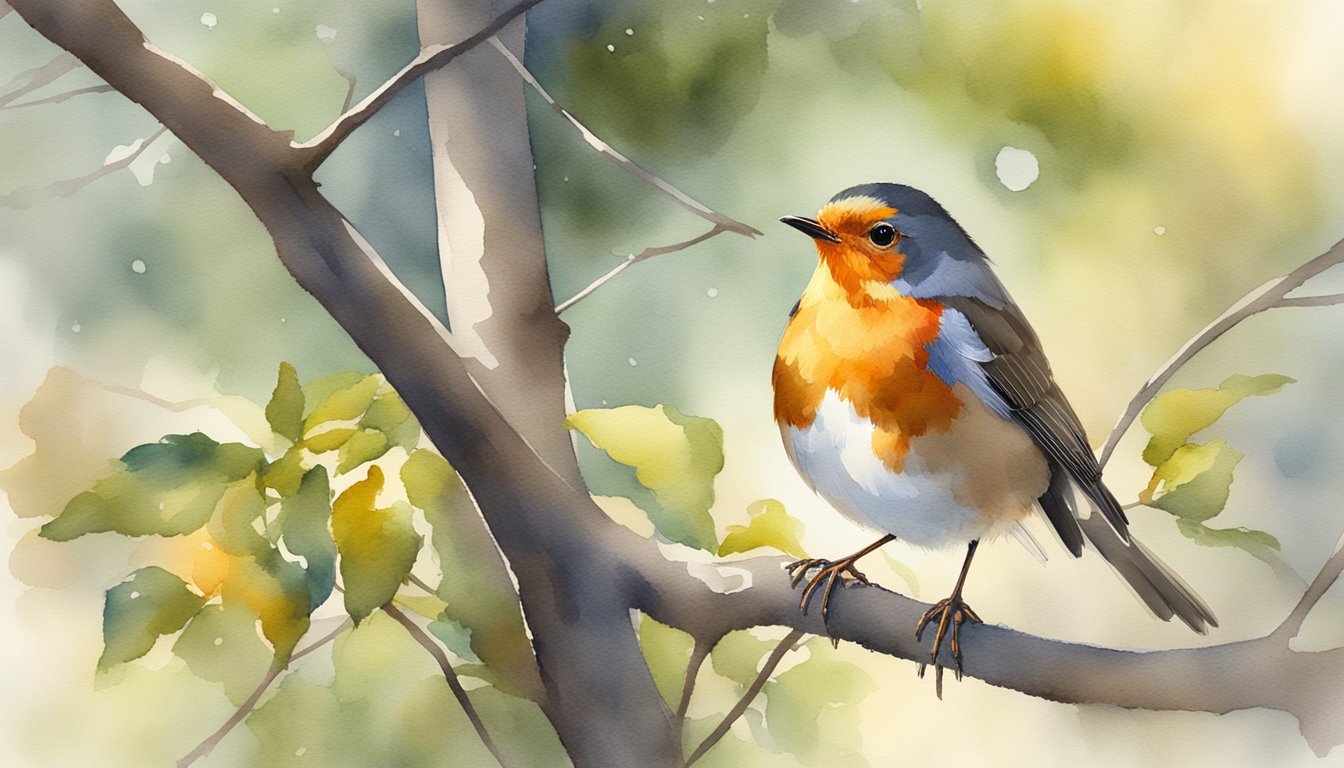Understanding Robins

Robins are a familiar sight in many parts of North America, recognized for their melodious songs and vibrant plumage. This section delves into their physical characteristics, habitats, dietary habits, and migration patterns.
Physical Characteristics
The American Robin, or Turdus migratorius, stands out with its warm orange breast and gray feathers. An adult robin typically measures about 9 to 11 inches in length with a wingspan ranging from 12 to 16 inches. The average weight of a robin is about 2.7 to 3 ounces.
Habitat and Distribution
American Robins inhabit a range of environments across North America, from Alaska to Mexico, encompassing areas like Michigan, Connecticut, and Wisconsin. These songbirds from the thrush family comfortably make their homes in forests, woodlands, parks, backyards, and fields.
Diet and Foraging Behavior
Robins are known for their diverse diet — primarily insects, such as earthworms, and various fruits and berries. They exhibit a distinctive foraging behavior, where they can be seen tugging earthworms out of the ground or snatching fruits from bushes.
Migratory Patterns
As migratory birds, American Robins are often associated with the coming of spring, though they can be found year-round. Their migratory patterns vary widely; some migrate long distances from north to south, while others remain in milder climates throughout the winter months.
Reproduction and Lifestyle

American robins are a symbol of springtime, known for their beautiful singing and presence across North America. European robins have a distinctive appearance and are well-regarded in their own right. The remarkable aspects of these birds are best understood through their reproduction and lifestyle.
Breeding Habits
American robins typically engage in breeding activities beginning from early spring through late summer. They are known to form monogamous pair bonds each season. The female selects the mate based primarily on the male’s song and the quality of his territory. European robins also breed during spring and summer but can be territorial and will often lead solitary lives until they pair up.
Nesting and Young Care
Robins are diligent when it comes to nesting and caring for their young. The female robin is primarily responsible for constructing the nest, which is woven together from grass, twigs, and sometimes mud, shaped into a cup and usually placed in trees or on eaves. Robins may have three nests per year, each containing a clutch of three to five light blue eggs. Incubation lasts about two weeks, primarily performed by the female while the male provides food. Chicks are altricial, meaning they are born featherless and blind, requiring significant parental care.
Robins in the Ecosystem
In the ecosystem, both American and European robins play crucial roles. They are primarily ground feeders, consuming insects and worms which helps control pest populations. During winter months, American robins can form large flocks and switch to a fruit-based diet, aiding in seed dispersal. Their presence in varied habitats from cities to woodlands indicates a healthy ecosystem.
Conservation and Threats
Conservation efforts are essential due to threats from predators like snakes, cats, squirrels, and hawks. The brown-headed cowbird is a known brood parasite of the robins’ nests. Additionally, loss of habitat and the use of pesticides can negatively impact robin populations. Collecting data for conservation plans is essential for ornithologists to ensure the continuity of these iconic bird species.

